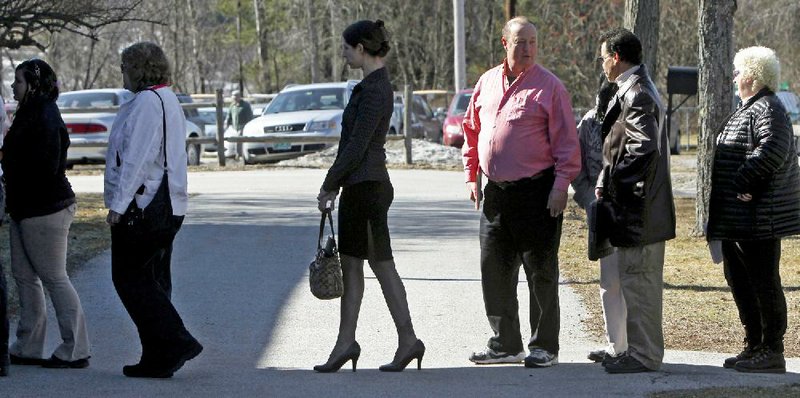WASHINGTON - The number of Americans applying for unemployment benefits fell 23,000 last week to a seasonally adjusted 340,000, a level consistent with solid job growth.
The less volatile four week average ticked down just 500 to 339,500, the Labor Department said Thursday. That’s close to the five-year low of 338,000 reached during the first week of May. The four-week average is 9 percent lower than in November.
“The underlying story in [unemployment] claims continues to be one of gradual improvement,” Bricklin Dwyer, an economist at BNP Paribas, wrote in a research report.
Unemployment claims are a proxy for layoffs. The decline in claims has coincided with steady job growth over the past six months. Since November, employers have added an average 208,000 jobs a month. That’s up from just 138,000 jobs a month during the previous six months.
“We’re definitely moving in the right direction,” said Carl Riccadonna, a senior U.S. economist at Deutsche Bank Securities Inc. in New York, who correctly predicted the drop in applications. “If we can get back to 330,000 or lower, that’s going to be an early sign that the economy is accelerating into the second half of the year.”
Much of the improvement has come from fewer layoffs, not robust hiring. Employers laid off just 1.7 million workers in March, only slightly above the 12-year low reached in January. Overall hiring, however, remains far below pre-recession levels.
More than 4.7 million Americans were receiving unemployment benefits the week that ended May 4, down 23 percent from nearly 6.2 million a year earlier.
The United States still has 2.6 million fewer jobs than it did when the recession began in December 2007. The unemployment rate has fallen to a four-year low of 7.5 percent, down from 10 percent in October 2009. Some of the decrease is because many people have given up looking for work. The government counts people as unemployed only if they are actively searching for jobs.
For hiring to strengthen enough to lower the unemployment rate to a more normal level of between 5.5 percent and 6 percent, companies must gain more confidence in the economy. But some may be hesitant to add workers because of concerns of deep federal spending cuts and tax increases.
Federal Reserve Chairman Ben Bernanke told a congressional committee Wednesday that the job market is improving, but that higher taxes and government spending cuts likely will slow economic growth this year.
Bernanke said it was too early for the Fed to abandon its extraordinary efforts to increase economic growth. The Fed said it plans to keep its short-term interest rates near zero until unemployment is below 6.5 percent. And it is buying $85 billion a month in Treasury and mortgage bonds to push down longer-term interest rates.
The Fed’s low interest rate policies are intended to encourage more borrowing and spending, which spur economic growth.
Information for this article was contributed by Jeanna Smialek of Bloomberg News.
Business, Pages 27 on 05/24/2013

